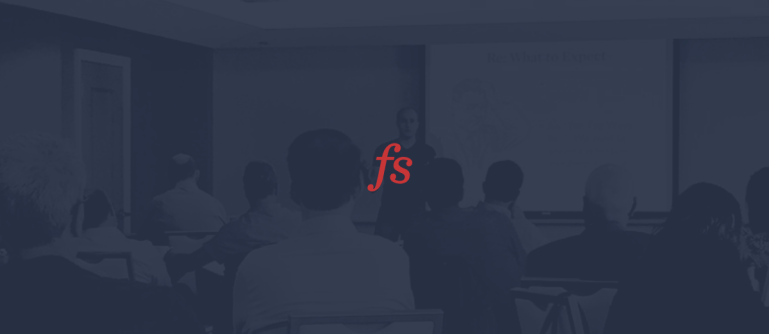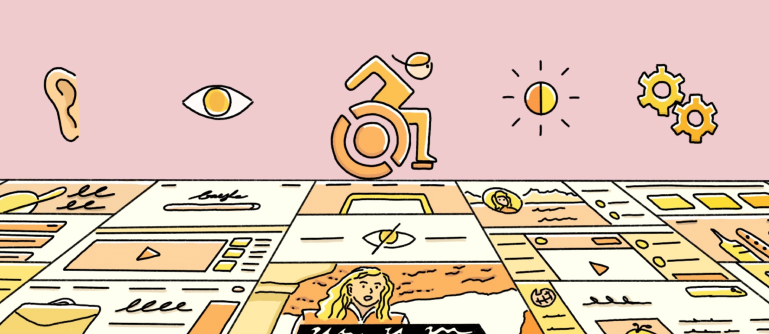- |
- |

This month I’ve been exploring the idea of becoming T-shaped: developing deep knowledge of a discipline, while gaining complementary skills that support it.
I’m here to broaden your horizons, as I’ve selected eight eclectic articles on the knock-on benefits of understanding the intersection between content, design, tech, and business.
With articles on improving your leadership skills, designing for accessibility at scale, and dabbling in micromastery—Super8 in August has a piece to help you step out of your comfort zone and experiment with something new.
1. 30 years, 30 lessons in leadership

- Read the full article here.
- Written by Dan Greene.
- Contributor: Sarah El-Atm.
No matter your discipline or years of experience, there’s always room to improve your leadership skills.
This recent piece from Dan Greene draws on his extensive experience in business (he’s worked at both Twitter and Google) and shares the lessons he’s learnt along the way.
You may have heard versions of these lessons over the course of your career, but Dan puts his own spin on them: his points are direct, succinct, and actionable.
Leadership is as much an art as it is a science. As such, it’s something you never really stop learning about. Every experience has taught me new lessons, new ideas, and new techniques.
There’s a rule for all use cases and challenges: Rule 9 is a great example of something that appears simple but can be a difficult lesson to practice…making Rule 10 all the more important.
2. In praise of slowness: challenging the cult of speed.

- Read the full article here.
- Written by Farnam Street.
- Contributor: James Otter.
This piece is inspiration for when you need to adopt an alternative way of thinking or problem solving.
As the team at Farnam Street writes: we live in a world with more information than ever, and yet we understand less.
This article grows your appreciation for taking things slow. It shares clear evidence of the consequences of not slowing down, not fully understanding ideas and concepts, and ultimately, not coming up independent ideas. Here’s why slowing down can give you the space to grow new skills, apply deeper thinking, and make better decisions.
3. The ‘three-click’ rule for navigation is false.

- Read the full article here.
- Written Page Laubheimer.
- Contributor: Rowan Barnes.
We love articles that turn convention on its head, and this piece on ‘three-click’ navigation does exactly that.
Working in digital, many of us play into the assumption that no page should take more than three clicks to access.
But is there data to support this idea? Page Laubheimer makes a case for why there isn’t.
Limiting interaction cost is important, but the picture is more complicated than simply counting clicks and having a rule of thumb for the maximum number allowed.
Everyone wants to ensure their solution creates a usable (and delightful) experience for users, and this piece serves as a timely reminder to question (often arbitrary) constraints.
No matter your role on a project or outcome, we’ve got a shared goal in mind: put the user first.
4. What webmasters should know about Google’s core updates.

- Read the full article here.
- Written by Google Webmasters.
- Contributor: Mike McCusker.
In an effort to continue improving how their systems assess content, Google recently made a few ‘core updates’ to their system—updates that help determine whether your website ranks higher (or lower) for the keywords relevant to your business.
With each update, there’s one trend that continues to ring true: focus on creating useful content. Does your content provide meaningful insights or analysis? Is it optimised for a fast page load time? Is it well-designed and engaging?
Whether you’re an analyst, designer, copywriter or developer, there’s opportunity to learn more about feeding the Google machine while better engaging your audience.
5. Designing accessible experiences at scale.

- Read the full article here.
- Written by Andi Galpern.
- Contributor: Bridget Noonan.
If there’s one thing you might know about August: it’s that our team is passionate about accessibility and making digital accessible for everyone.
This piece by Andi Galpern shares how a robust design system can help with developing accessible outcomes for large audiences—with plenty of handy resources and links to help you on your way.
Design systems are the secret sauce to scale and develop experiences with speed and consistency. They include reusable components and well-documented requirements for buttons, colors, typography, voice, and tone, and anything that your brand stands for.
While this piece looks at how designers can promote accessibility within scalable solutions, the more your entire team understands this topic, the more your business can advocate for digital experiences that facilitate all learning styles, abilities, and preferences.
6. From a wrongful arrest to a life-saving romance: the typos that have changed people’s lives.

- Read the full article here.
- Written by Tom Lamont.
- Contributor: Elliott Grigg.
Let’s change tempo a little. Instead of sharing a meaty article about the importance of words, we came across this useful read on the power of typos.
In keeping with this month’s theme, writing is something we all do every single day—and typos are something many of us tend to overlook.
From typos in satnavs that take drivers to Pomerania instead of Rome, to receiving an accidental text message that communicates an incoming ballistic missile, this article provides us with a few reminders to slow down and check your words before hitting publish, send, or print.
7. Agile gone wrong.

- Read the full article here.
- Written by Joe Van Os.
- Contributor: Isabel Silvis.
At August, we use a form of Agile to help plan and deliver projects. We also use tools that we’ve customised to bridge gaps between disciplines and maintain project velocity.
As Jo Van Os writes, Agile is now mainstream for many organisations that dabble in digital. Going Agile can have some great knock-on benefits for everyone in your business, but what happens when you haven’t got the basics down pat?
Joe looks at how building stability, heeding warning signs, and maintaining balance is the key to team-wide success.
8. Why you should try micromastery.

- Read the full article here.
- Written by Kelsey Osgood.
- Contributor: Aziza Mohamed.
If you’d like to try increasing the breadth of your experience, this article is definitely one for you. Kelsey Osgood looks at the concept of ‘micromastery’: working to develop competence in a single, concrete skill.
You also don’t have to choose something banal and useful: You could learn to read hieroglyphics, rather than change a flat tire or fix a leaky faucet. Because the skills tackled in a micromastery are often simple and always repeatable, it almost always guarantees a payoff.
A micromastery isn’t about spending 10,000 hours becoming an expert at something. It could be anything from learning how to dance the tango, brew beer, or cook the perfect omelet. Micromastery doesn’t need to be related to your field, discipline, or expertise, and is the perfect opportunity to simply try learning something new.
More Articles
Up for some more?
Get your monthly fix of August happenings and our curated Super8 delivered straight to your inbox.
Thanks for signing up.
Stay tuned, the next one isn't far away.
Return to the blog.
